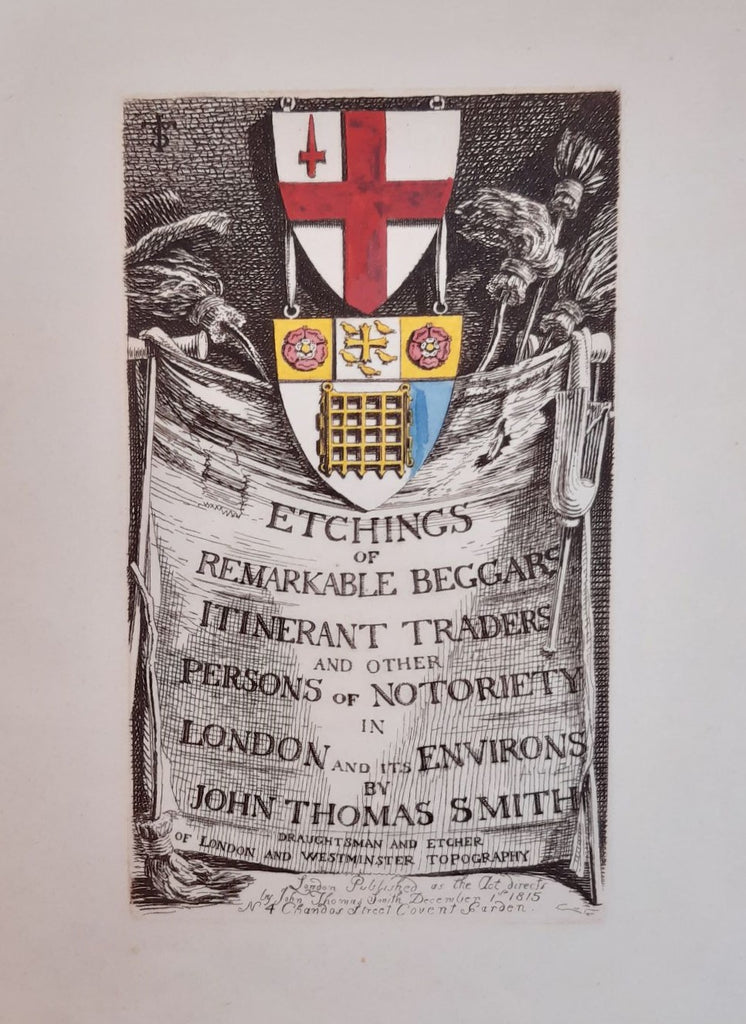Etchings of Remarkable Beggars, Itinerant Traders and other Persons of Notoriety in London and its Environs
SMITH, John Thomas









London: John Thomas Smith. 1815.
Second edition. Folio. Title page and forty etchings (of forty eight) sold as a collection of plates. Brown full morocco, raised bands with simple double fillet and fleur de lys design in blind, spine lettered in gilt, marbled endpapers with Van Gelder watermark. One very small mark on the upper cover and slight rubbing to corners and two small areas of rubbing to the front turn-ins but overall in excellent condition. Internally fine with the plates in superb condition and only slight foxing to the margins.
The first edition of John Thomas Smith's Etchings of Remarkable Beggars was published in early 1816 (although the engraved hand-coloured title page is dated 1815) with twenty three plates. It was later reissued with forty eight plates (of which forty are present in this copy). Remarkable Beggars is an important work not just because it is a fine example of Smith's skill as a draughtsman but also due to its highlighting of the serious poverty and vagrancy that characterised London in the years following the end of the Napoleonic Wars when many destitute and badly injured young soldiers returned to an England suffering an economic slump. Smith captures with genuine humanity the pity and desperation of the London poor existing on the margins by begging or wandering the streets selling small quantities of food, toys and household goods. The question of spiralling poverty was debated extensively in Parliament and by 1817 Smith noted in his introduction to Vagabondia that matters on the streets of London had improved since the dire situation recorded only a year or two earlier in Remarkable Beggars. Smith's moving and affecting work no doubt contributed to this welcome change.
John Thomas Smith trained initially with the great sculptor Nollekens (for whom Smith’s father, a printmaker and sculptor had worked) who introduced him to many of the leading artists and public figures of the day. However, Smith showed little aptitude for sculpture but he could draw and so he was taken on by the engraver John Keyse Sherwin to learn the art of printmaking. Smith rode the wave of the late eighteenth century fashion for collecting prints, producing etchings and aquatints of scenes of London. Although most of his work reflected life in the city, he did produce a set of rural scenes in 1797 which had an influence on the young John Constable. By the time of Remarkable Beggars, Smith had fallen on comparatively hard times having lost a large amount of stock in a fire, although he secured a regular income as the keeper of prints and drawings at the British Museum. On Smith’s death in 1833, Constable (who had remained a friend) organised a subscription for his impoverished widow, suggesting that Smith was held in affection and respect by his fellow artists.
